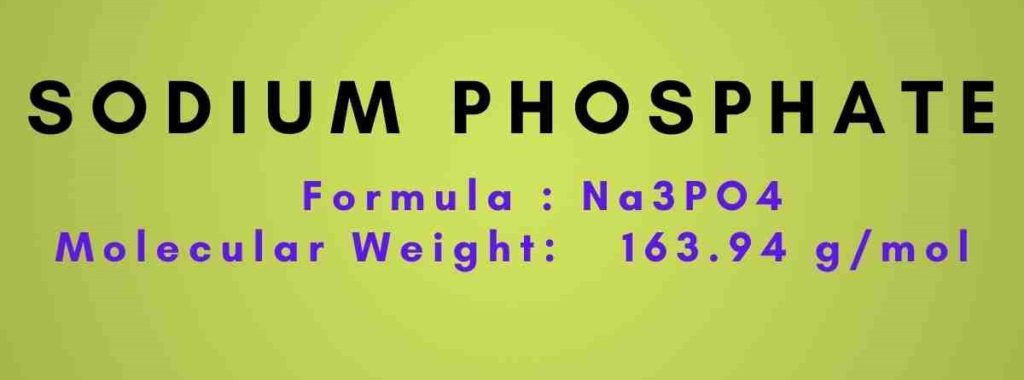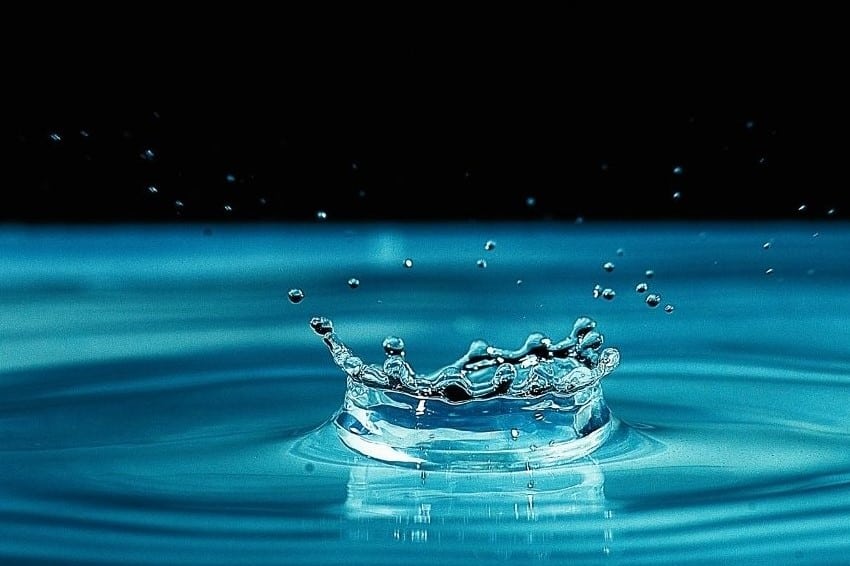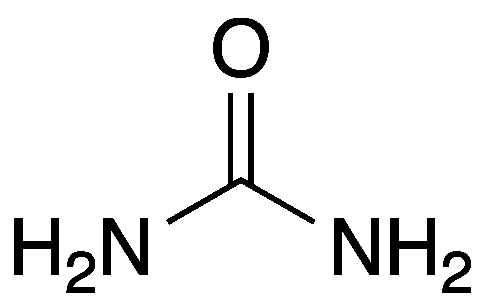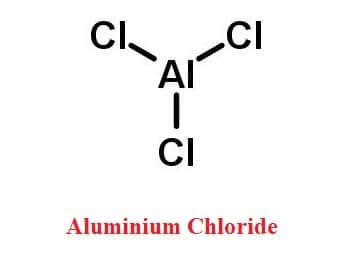Sodium phosphate is an ionic compound composed of sodium cation and phosphate anion. This is salt may be found in both hydrated and anhydrous forms, with anhydrous (water-free) sodium phosphate being more prevalent in nature. The sodium phosphate formula is Na3PO4 and it has a molecular weight of 163.94 g/mol.

Sodium phosphate (Na3PO4) dissolves in water.
Furthermore, all-metal carbonates, phosphates, borates, sulfates, chromates, and arsenates, except sodium, potassium, and ammonium, are insoluble in water but soluble in dilute acids.
Table of Contents
Sodium Phosphate Formula
Sodium phosphate is a sodium-phosphate salt with the chemical formula Na3PO4. This is because sodium belongs to group 1 and has a valency of +1, but phosphate is a polyatomic ion with a valency of 3, requiring three sodium atoms for each phosphate ion, resulting in Na3PO4.
Sodium phosphate is an ionic compound and so exhibits an electrovalent chemical structure. However, The phosphate anion itself consists of a covalent structure.
| Technical Name of compound | Sodium phosphate– Na3PO4 |
| Appearance | White to off-white powder, crystals, or granules |
| Melting point | 1583 °C |
| Molar mass | 163.94 g/mol |
| Density | 1.62 g/cm³ |
| Uses | Sodium phosphates are often used as emulsifiers (as in processed cheese), thickening agents, and leavening agents for baked goods [Reference]. |
Related Links
Ammonium Dihydrogen Phosphate
Hydrogen oxide-An Overview
Hydrogen Phosphate Formula
Is HCN Polar or Nonpolar| Simple Explanation
Liquid Oxygen-Cryogenic Liquid
Frequently Asked Questions
1. is sodium phosphate soluble?
Sodium phosphate (Na3PO4) is soluble in water.
Furthermore, The carbonates, phosphates, borates, sulfates, chromates, and arsenates of all metals except sodium, potassium, and ammonium are insoluble in water but soluble in dilute acids.
2. is sodium a cation or anion?
Sodium phosphate is an ionic compound composed of sodium cation and phosphate anion.
Cation is a positively charged ion, i.e. one that would be attracted to the cathode in electrolysis.
3. What are sodium phosphate formula and molar mass?
The sodium phosphate formula is Na3PO4
molar mass = (3 x mol mass of Na) + mol mass of P+ (4 x mol mass of Oxygen)
molar mass of Na3PO4 =3×23+1×31+4×16=164gmol−1
4. What are the sources of Phosphorus?
Phosphorus is naturally present in protein-rich foods such as meats, poultry, fish, nuts, beans, and dairy products (organic phosphorus). Phosphorus is found in grains, particularly whole grains. Phosphorus can also be found in tiny levels in fruits and vegetables.
5. Sodium Tripolyphosphate?
The sodium salt of the polyphosphate Penta-anion, sodium tripolyphosphate, is an inorganic chemical having the formula Na5P3O10. It’s found in a variety of household and commercial goods, notably detergents.
6. What are ionic compounds?
Ionic compounds are formed by a process known as electron transfer, in which one atom transfers electrons to another. An atom of one element loses one or more electrons during electron transfer, and an atom of another element gains those electrons. Both atoms are involved in the electron transfer from ions.
7. What is the process of distillation?
Distillation is the separation of a mixture of liquids based on variations in their boiling points (or volatility). Water may be extracted from a salt solution using this method.
8. What is the combustion process?
Combustion is a chemical process in which heat and light are produced. The most common sort of combustion is fire.
9. Is zinc a strong metal?
Zinc metal is a low-tensile-strength metal with less than half the tensile strength of mild carbon steel.
More Links
How Much is a Liter of Water?
How Many Cups in a Gallon? Cups to Pints, Quarts, and More
HCN Lewis Structure & Molecular Geometry
N2 Lewis Structure| Hybridization & Molecular Geometry
How cold is Liquid Nitrogen?
Disclaimer
Whatsinsight.org‘s blog and everything published on it are provided solely as an information resource. The blog, its authors, and affiliates accept no responsibility for any accident, injury, or damage caused by following the information on this website, in part or in whole. We do not recommend using any chemical without first consulting the manufacturer’s Material Safety Data Sheet and following the safety advice and precautions on the product label.
- BCl3 Lewis Structure in four simple steps - November 1, 2023
- PH3 Lewis Structure in four simple steps - October 8, 2023
- PF3 Lewis structure in four simple steps - September 24, 2023



